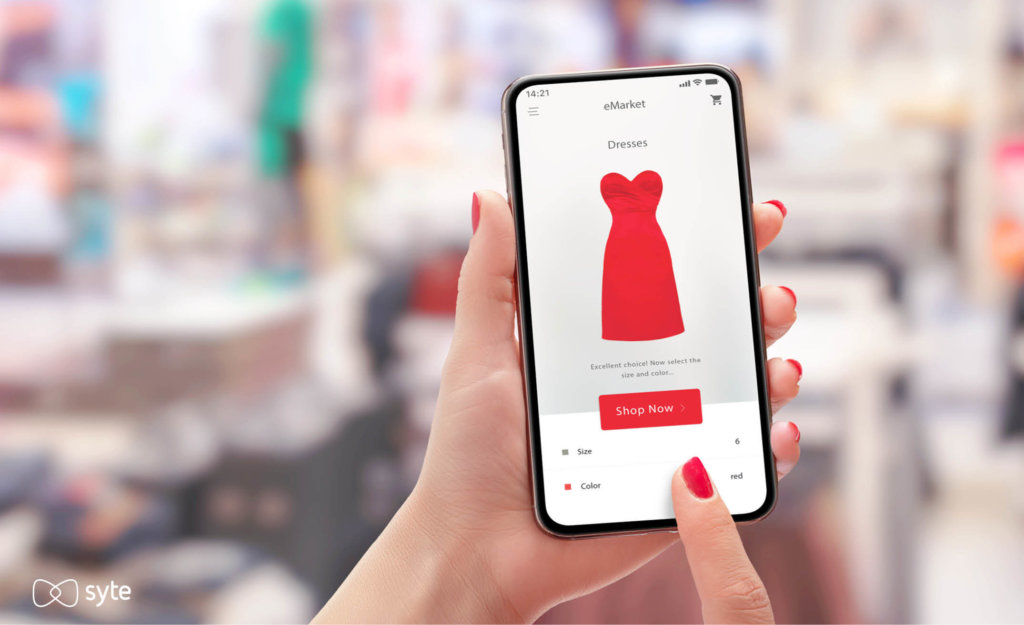This article was originally published by Supply Chain Brain.
Imagine you just bought a new robotic vacuum cleaner. After doing your research and purchasing the best available option, you can’t wait to bring your new gadget home and get effortlessly clean floors. To your amazement, it not only vacuums your floors, but it also does the laundry, washes your dishes, and takes out the trash.
While the perfect house-cleaning robot may still be a few years into the future, the idea of a single piece of technology that can unlock a range of benefits is something we’re already seeing with visual AI and its applications for eCommerce and retail.
As visual AI becomes more advanced, its value is often measured within the context of the sales and revenue it helps generate. Indeed, visual AI tools such as visual search have unlocked a host of sales-related advantages for eCommerce sites, including more accurate on-site search results, higher purchase volumes, and greater AOV. But there’s another, often untapped asset of visual AI: data. Lots and lots of data.
This data is your key to operational efficiency. Within it lives a wealth of information about your shoppers, which you can use to optimize your supply chain and transform your operations by boosting efficiency, better predicting customer trends, increasing sales, and eliminating waste.
Visual AI Data: 3 Core Applications for Supply Chain Optimization
This year, more than ever before, as our industry faced supply chain disruptions, unexpected shifts in demand, and unprecedented urgency to improve sustainability, visual AI has proven to be a wellspring of data that enables supply chain optimization and the far-reaching business benefits that come with it.
Let’s examine three key advantages.
1) Accurately Predict Demand to Inform Inventory & Warehousing Decisions
Visual AI has been a boon to the eCommerce industry — enabling brands and retailers to achieve unprecedented conversion rates and customer engagement. One reason for this is the technology’s ability to more effectively match shoppers with the products that best suit their individual taste, style, and goals.
By understanding which products shoppers actually want and love the most, and by analyzing their subsequent on-screen actions (i.e., add to cart, recently viewed, or wishlist), you’ll gain a crystal clear view of what your audience is looking for — and what they are not.

Integrating this data into your supply chain and inventory management systems empowers you to make more strategic, accurate decisions on which products and styles to offer and how much inventory to maintain.
Compared to standard inventory management systems, visual AI provides a much more nuanced view of what types of products, styles, and trends are gaining traction with shoppers. This empowers you to boost profits by stocking your inventory with items that data indicates will sell most.
While traditional inventory management systems still rely on manual or otherwise limited product-tagging models, visual AI automatically analyzes and tags items according to minute details and visual characteristics. This allows your inventory management system to account for a wider range of factors when predicting demand and calculating how much merchandise to buy — factors that traditional systems would misinterpret or miss altogether.
For example, while traditional inventory management systems might attribute your uptick in sales to demand for tops with floral prints, visual AI could tell you that, in fact, tops with front button closures are actually what’s driving the spike, many of which in your stock also happen to have floral patterns.
By understanding with certainty exactly which product attributes influence sales, you can make smarter, more strategic decisions about what merchandise to order, when, and how much. You can also easily spot trends for particular fabrics, cuts, patterns, and styles just as they begin to emerge, enabling you to stay a step ahead of the competition.
2) Remain Agile When the Unexpected Happens
We learned with the onset of the COVID-19 pandemic that unexpected external factors can wreak havoc on brands and retailers if they don’t have the tools that will help them bounce back in real-time. It’s not just about having the deeper insights to understand the specific products that will sell, it’s about having immediate access to that data.

The overnight transition from regular life to staying at home nearly 24/7 suddenly made entire categories of fashion and accessories near-obsolete, at least temporarily. With demand for outerwear, handbags, and vacation items seeming to evaporate into thin air, brands and retailers were left with warehouses brimming with goods no one wanted. At the same time, many companies couldn’t keep up with surging demand for loungewear, home exercise gear, and masks. The pandemic similarly saw explosive demand for home decor and DIY items, leaving brands scrambling to stock the right products in the right quantities.
Even traditional AI systems failed to respond to sudden shifts in consumer behavior. When companies needed to pivot their strategies to fulfill consumers’ new demands, inventory management systems powered by traditional AI were unable to recognize or understand consumers’ behavior without manual intervention.
By integrating visual AI data into your inventory management and planning systems, you gain the agility required to handle the unexpected by tracking changing trends as they happen. Visual AI can analyze users’ on-screen actions in real-time and continuously update its insights based on the visual details shoppers respond to most. By applying a more granular yet fluid approach to managing inventory, you’ll be positioned to respond to external factors faster and more effectively.
3) Reduce Waste & Align Your Brand Values With Environmentally Conscious Consumers
With a more precise, data-driven approach to inventory logistics, it will be easier to eliminate waste and dramatically reduce the overhead costs associated with inventory management and warehousing surpluses.
Another crucial benefit of reducing waste via smarter inventory management is lowering your company’s impact on the environment. The fashion industry’s environmental effects are well known — from its consumption of vital resources to greenhouse gas emissions. In addition to the direct effects of manufacturing textiles and garments, the supply chain — including freight, shipping, and warehousing — also takes a toll on the planet. According to McKinsey, 90% of consumer companies’ environmental impact comes from their supply chains.

Creating a supply chain and inventory management system that is based on consumer-centric data helps businesses reduce their global footprint by decreasing the production, shipping, and storage of unpopular and low-profiting items.
Companies that adopt sustainable practices are also poised to perform better. Increasingly, consumers want the brands and retailers they patronize to be more transparent about their impact on the environment and take greater steps to achieve sustainability. According to McKinsey, 88% of consumers believe retailers should take action to reduce pollution, while 63% say a brand’s promotion of sustainability is a significant purchasing factor.
Visual AI: An All-in-One Approach to Inventory Management
The best part about your fictional robotic vacuum cleaner is that it could achieve far more than you ever expected. Visual AI is an invaluable product discovery, tagging, and recommendation technology. But the data it produces opens the door to many more potential advantages.
Key elements of operational efficiency in retail — including supply chain, sourcing, and inventory management — are ripe for optimization. The data derived from visual AI contains the most intimate, insightful information about what you shoppers actually want to buy, which means you’ll know exactly which products to offer, and which to skip, in real-time.
The application of visual AI data in retail operations is yet another way visual AI technology is propelling early adopters ahead of the competition. With leaner, more intelligent internal processes, you’ll be poised to thrive.